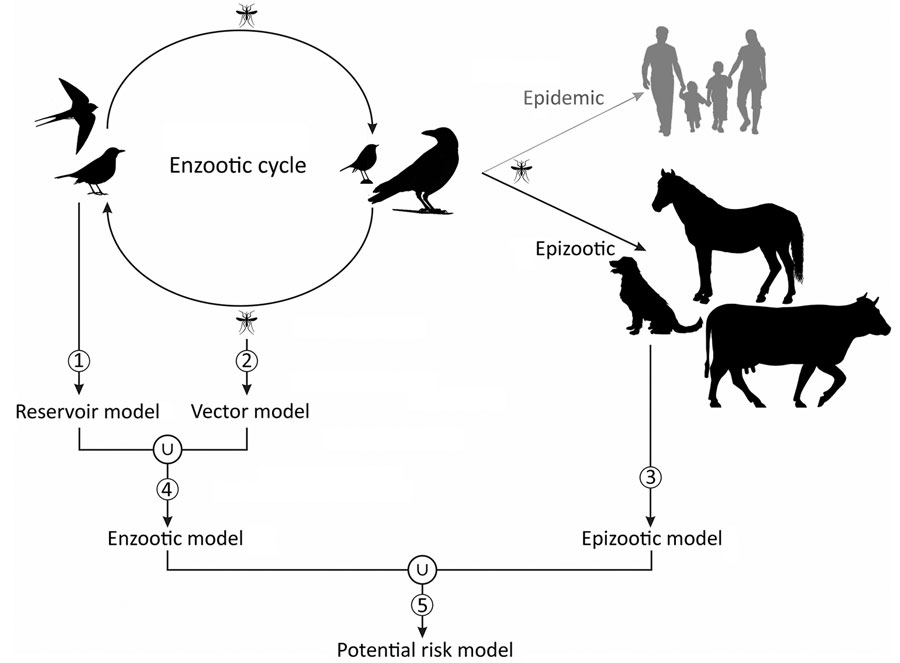Volume 28, Number 4—April 2022
Research
Mapping the Risk for West Nile Virus Transmission, Africa
Figure 1

Figure 1. Lifecycle of West Nile virus and schematic elaboration of different models (numbered 1–5) for each component of the cycle of models for Africa. Model 1 (reservoir model) identifies favorable areas for the virus presence in reservoir animals. Model 2 (vector model) identifies favorable areas for the virus presence in vector animals. Model 3 (epizootic model) identifies favorable areas for the virus presence in dead-end hosts. Model 4 (enzootic model) is a fuzzy union of the reservoir and vector models, identifying areas favorable for the virus presence in the reservoir or vector animals. Model 5 (potential risk model) is a fuzzy union of the enzootic and the epizootic models, identifying areas with potential for virus spillovers.
Page created: January 27, 2022
Page updated: March 19, 2022
Page reviewed: March 19, 2022
The conclusions, findings, and opinions expressed by authors contributing to this journal do not necessarily reflect the official position of the U.S. Department of Health and Human Services, the Public Health Service, the Centers for Disease Control and Prevention, or the authors' affiliated institutions. Use of trade names is for identification only and does not imply endorsement by any of the groups named above.